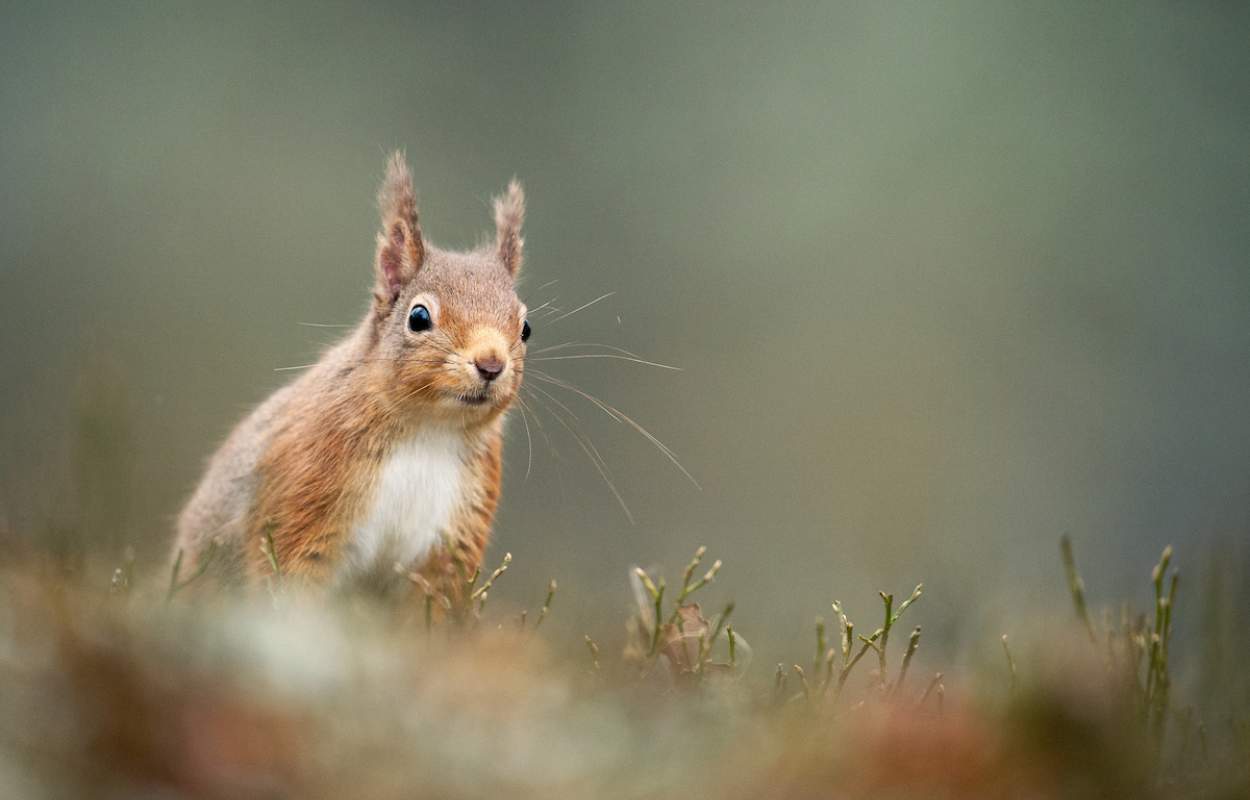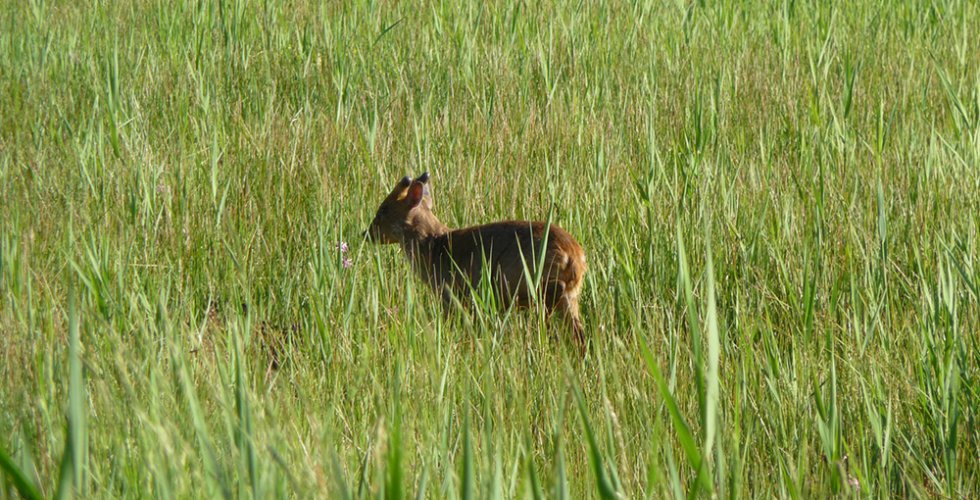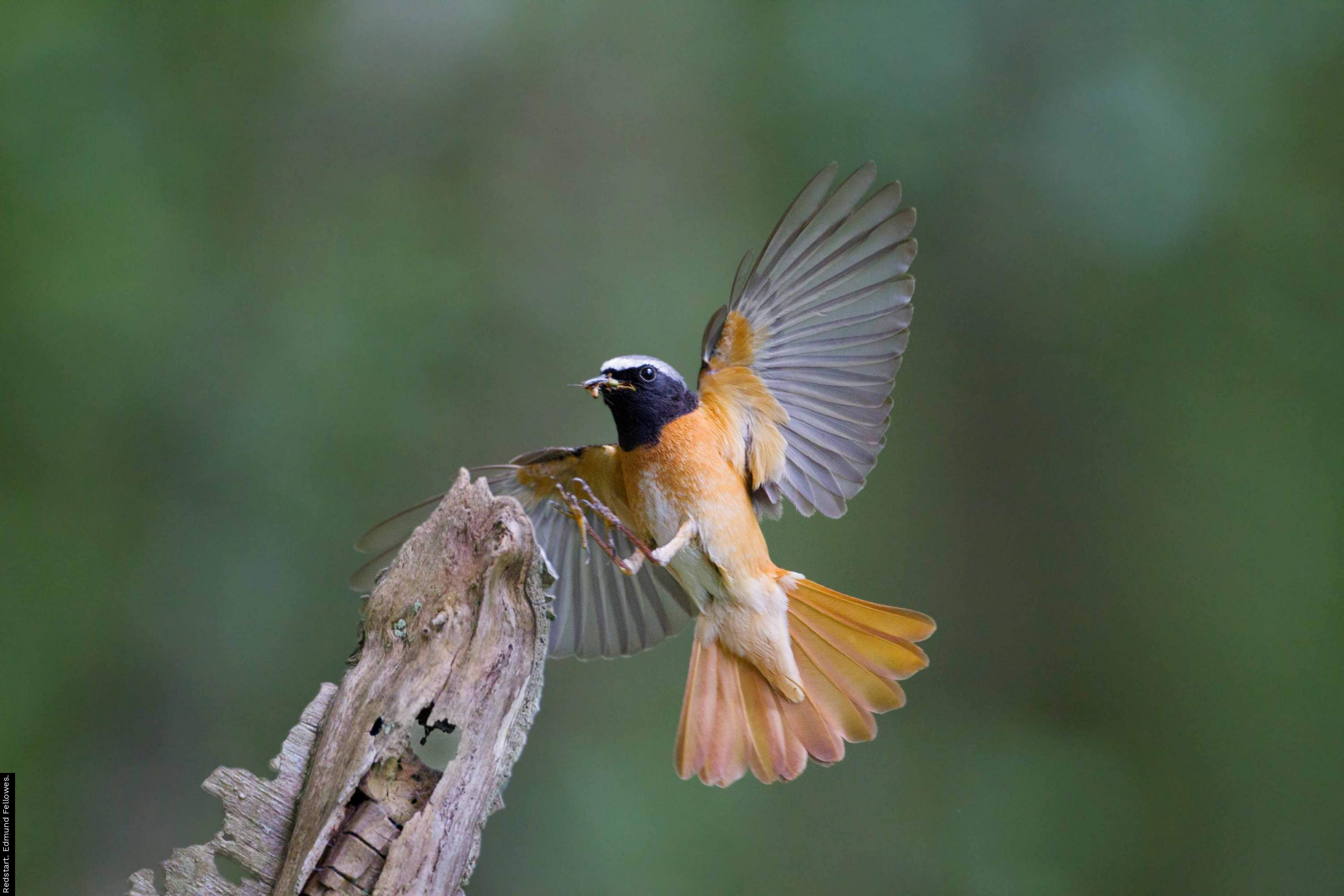Topics
Planning woodland expansion
There are ambitious targets for forest expansion across Britain, which are being delivered through combinations of new planting and natural regeneration. Enhanced biodiversity is among the target outcomes of national forest strategies, and BTO’s research legacy and ongoing projects place us in a unique position to assist with this, providing the evidence needed to enhance or maximise the conservation benefits of programmes for forest expansion, reforestation and rewilding.

A major change in landscape
Forest and woodland cover in the UK is low by historic standards, and in comparison to other European countries. Each of the four UK nations therefore has ambitious targets for forest expansion, including commercially managed plantations and the establishment of new native-type woodlands, through both planting and natural regeneration. Woodland supports a wide range of biodiversity, so, when implemented, such strategies would see major changes in the natural capital make-up of the UK, both in terms of species gained, but also those lost from afforested areas, which may include many open-country specialists. The Scottish Forest Strategy has been the most successful in the UK in terms of extent of forest expansion. Current cover is just less than 19% of the land surface (from a minimum of 5% around 1900) and recently revised targets of 15,000 ha of new forest per year will see cover reaching 25% by 2050. This arguably represents the biggest single change in land use (and of landscape) currently underway and planned for the foreseeable future anywhere in the UK. While the most extensive areas of ‘new’ forests are within the uplands, and hence why Scotland hosts a large proportion, there has also been active woodland creation and re-establishment in the lowlands. For example, over 22,000 farm woods have been planted in England since 1988, most of which are less than 5 ha in extent.
Each of the four UK nations has ambitious targets for forest expansion.
Where long-term studies are really needed
Timescales for forest management and (re-)establishment encompass decades, even centuries, however, a range of BTO studies have tried and continue to try to assess the impact of afforestation and of alternative approaches to managing forests. These include using extensive data notably derived from the BTO/SOC/BWI Bird Atlases to inform future planting decisions through risk and opportunity mapping. This involves identifying areas where forest expansion might further constrain species reliant on open habitats such as breeding waders, and where such risks are low, identify where the opportunities for woodland birds may be greatest. More bespoke work continues to develop the evidence base around silviculture practices and other management that influences woodland structures and how these determine the bird community supported by woodlands. Such research includes long-term studies, that often tend to be localised, and more extensive studies, that are usually short-term or occasionally repeated periodically. An example of a long-term study is the monitoring of birds within naturally regenerating forests in the Scottish Highlands, which started in 1998, and is repeated at five-yearly intervals. Complementary work has monitored changes in both naturally regenerating as well as newly planted woodlands since 2007. More extensive studies have looked at the influences of different silvicultural treatments and at how deer browsing affects forest structure and the birds that are supported.

Using research to inform management
As well as ensuring the scientific rigour of our research through the publication of results in peer-reviewed journals, we are increasingly active in producing guidance notes in partnership with the forest industry and policy makers, which improve how accessible our research is to practitioners. For example, we have shown that the distribution of young growth stages within Sitka Spruce forests (the most extensively grown tree crop species in Britain) managed by alternative silvicultural systems influences the birds that can be supported. Although continuous cover forestry (CCF) systems support more forest birds, both species and numbers (e.g. Goshawk and Redstart), more typical clear-felling rotational (CFR) systems support more shrubland species (e.g. Cuckoo and Willow Warbler) within the extensive blocks of young new plantings or restocks. An optimal bird conservation strategy for conifer plantations in the British uplands could, therefore, be to include CFR, with associated young growth areas, alongside CCF, as this would provide conditions for both shrub and mature tree dependent species. These findings have been published in scientific journals and also been made available to practitioners through an industry-focussed guidance note. More guidance notes are planned to inform land managers and policy makers about the opportunities for management interventions to benefit grassland, moorland and shrubland birds within long-term forest planning.
Would you like to help the BTO by volunteering your time?
While periodically we will be looking for BTO supporters to help with specific surveys of woodlands and their birds, the time scales associated with woodland development often mean that we have to rely on our more extensive data sets. Anyone participating in BTO surveys and monitoring programmes such as the Breeding Bird Survey within any wooded area is almost certainly helping with our programme of research into woodlands. Furthermore many people who undertake their fieldwork outside of woodlands will also be helping by providing crucial information on the whereabouts of species that would be further constrained by afforestation.
Take part in a projectRelated Publications

Stand structure and breeding birds in managed Scots pine forests: Some likely long-term implications for continuous cover forestry
Forest Ecology and Management
Continuous cover forestry (CCF) systems are increasingly advocated for stand management, with biodiversity among the ecosystem services perceived to benefit.
More Details
Comparison of breeding bird assemblages in conifer plantations managed by continuous cover forestry and clearfelling
Forest Ecology and Management

Effects of deer on woodland structure revealed through terrestrial laser scanning
Journal of Applied Ecology
Terrestrial laser scanning (TLS) captures the three‐dimensional structure of habitats.
More Details
Breeding and post-breeding responses of woodland birds to modification of habitat structure by deer
The impact on woodland birds of changes to woodland habitat structure by deer
Biological Conservation
Birds in woodland can be affected by increasing deer populations through changes to the vegetation structure and the potential impacts on foraging resources; these effects need to be better understood. This work, carried out over three years by the BTO and the University of East Anglia, used experimental exclusion of deer to look at the effects of deer browsing in English coppiced woodland.
More Details



Share this page